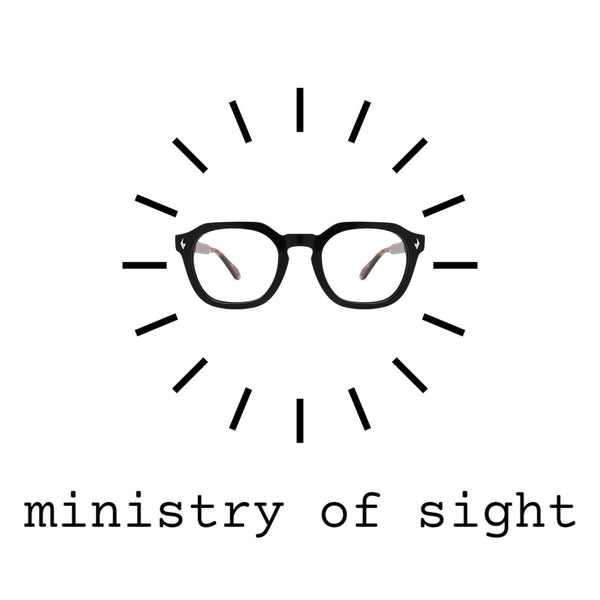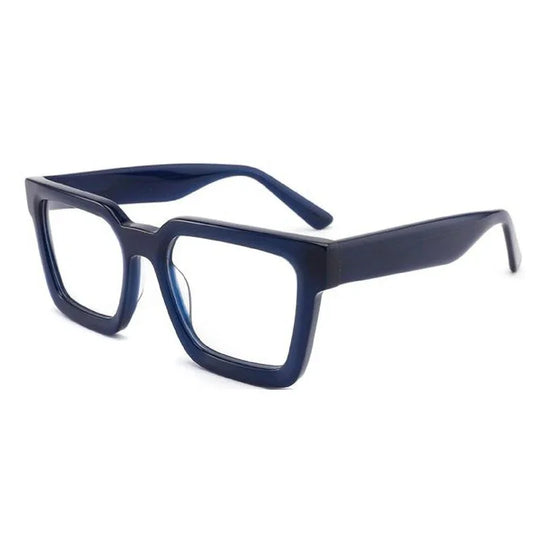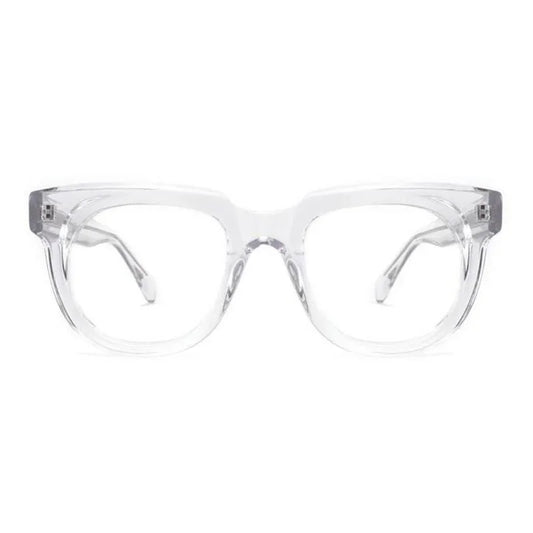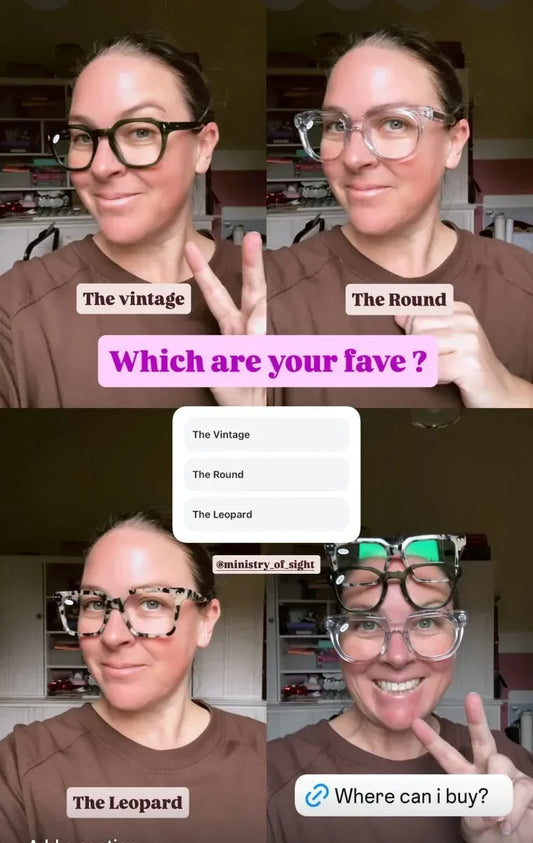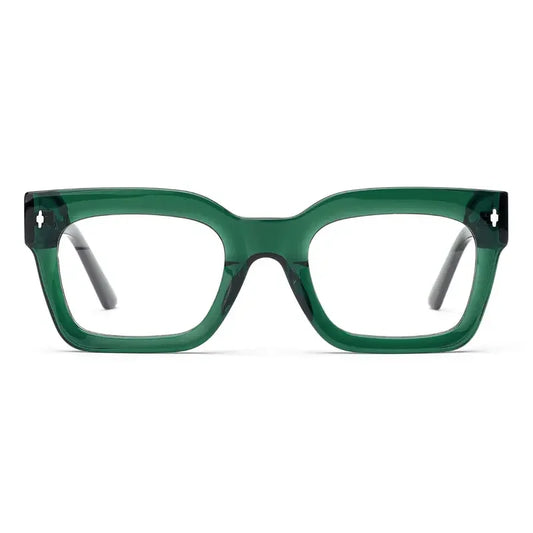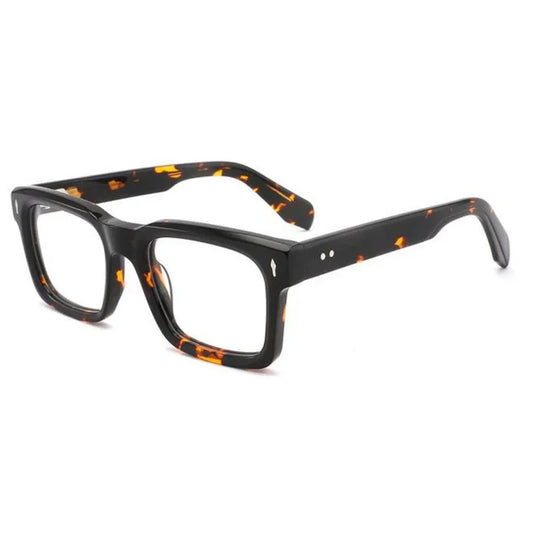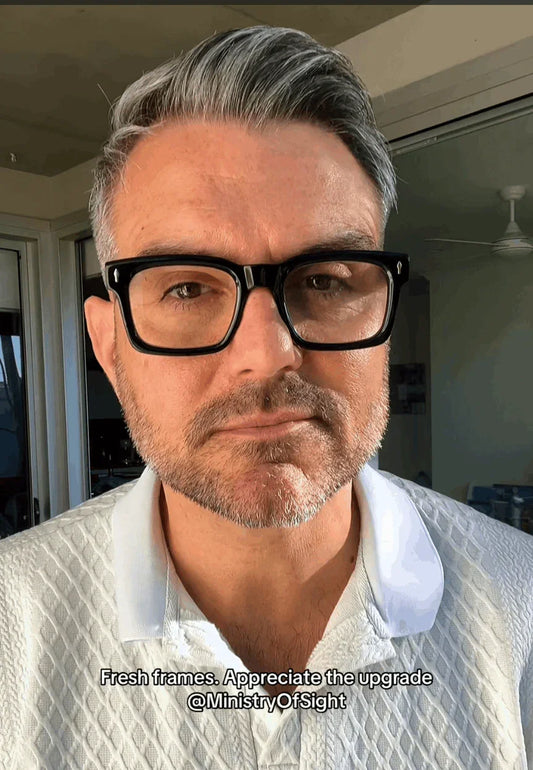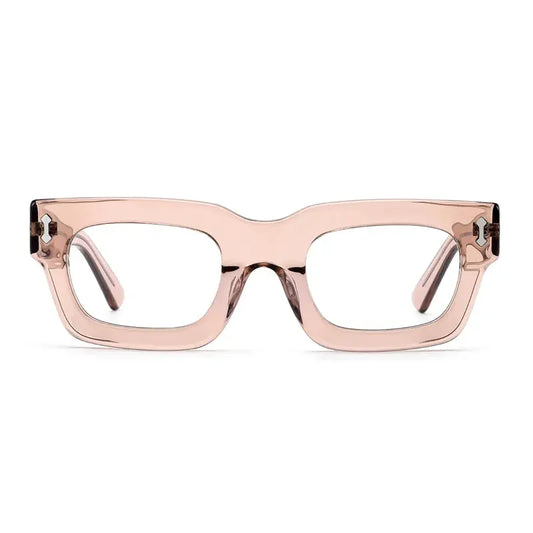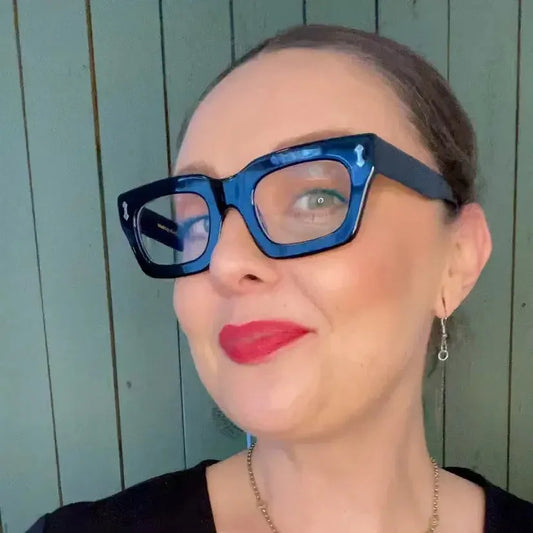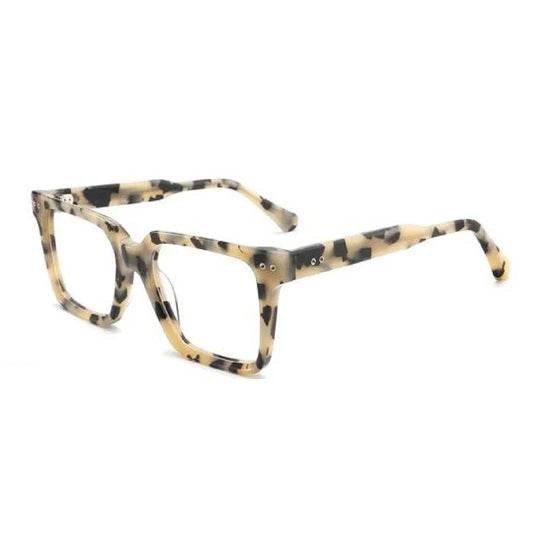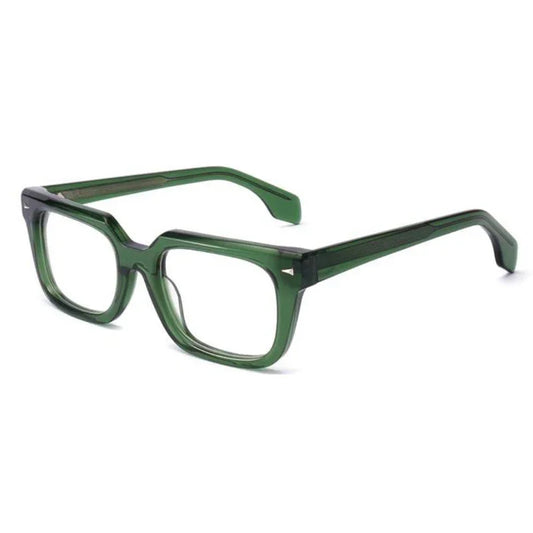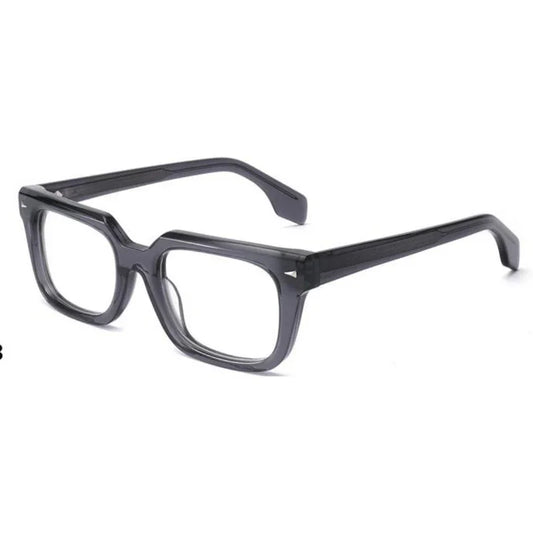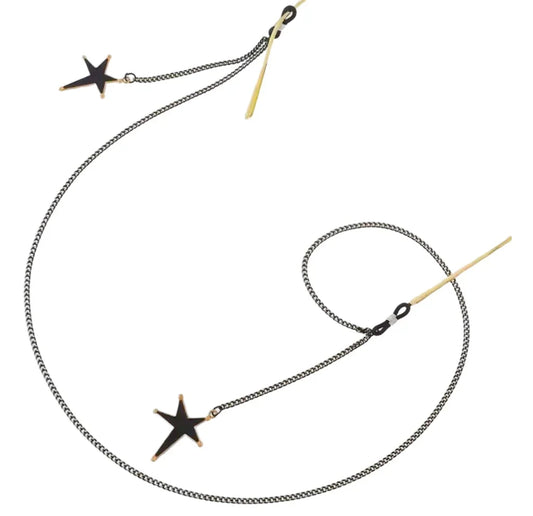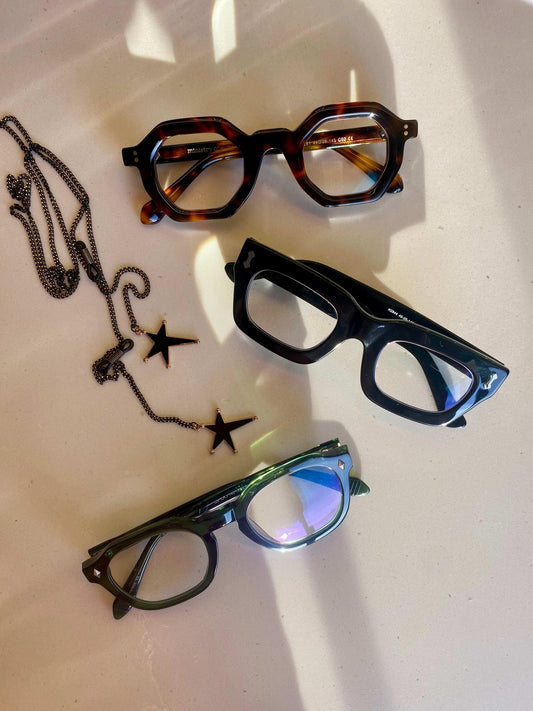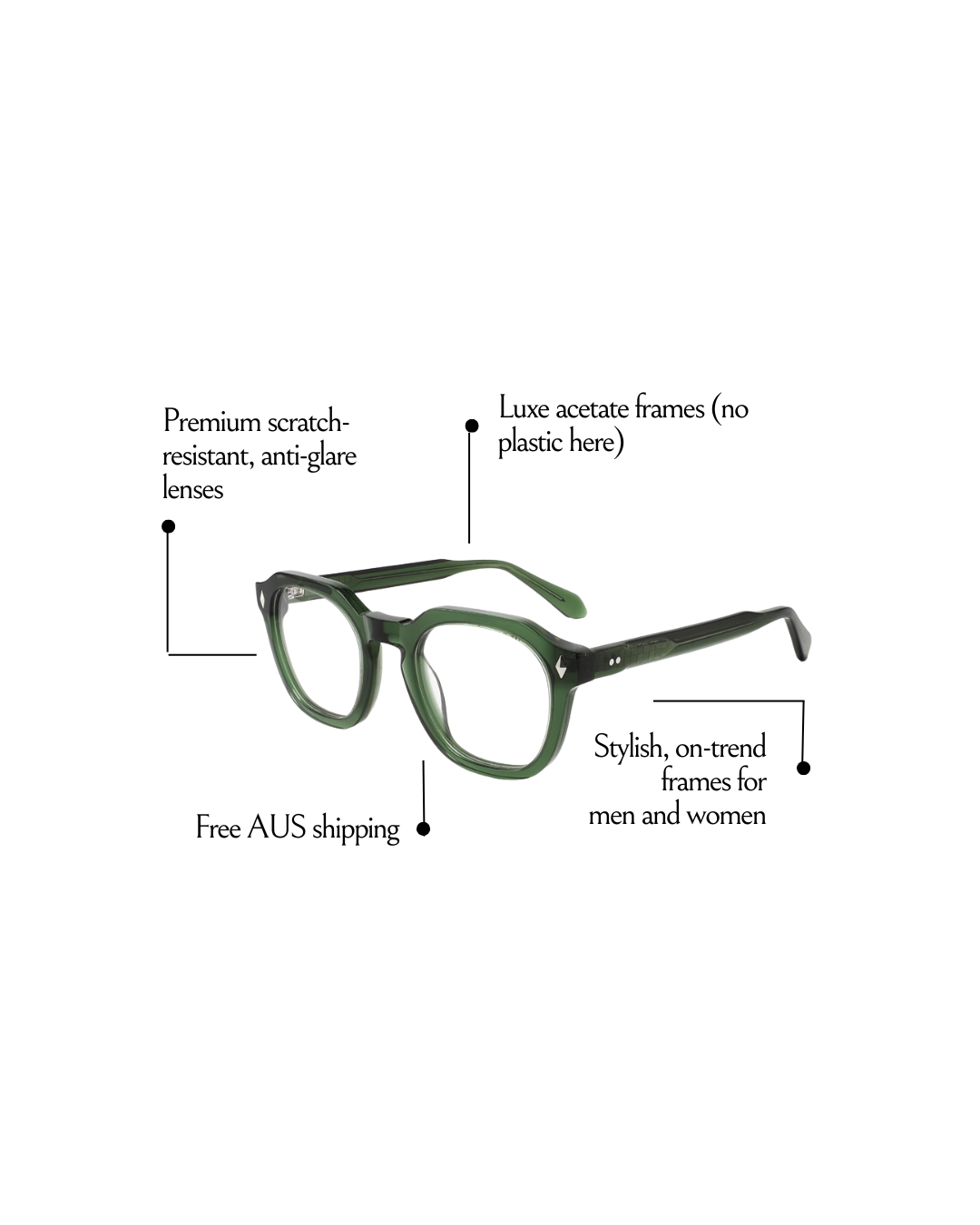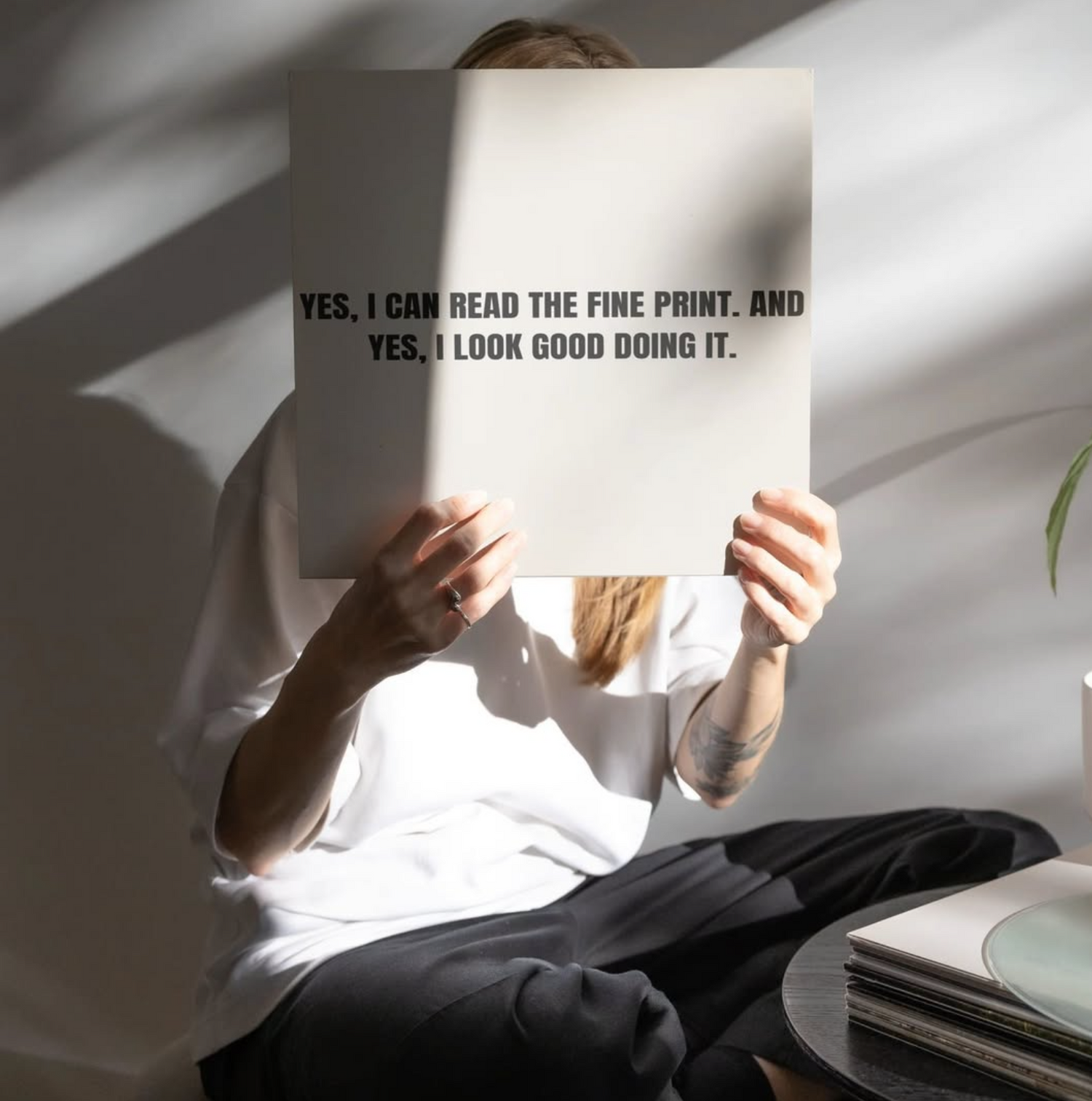
Understanding Lens Types for Reading Glasses
Choosing reading glasses seems simple enough. And yet, the variety of lens types and features might surprise you. Some lenses, like single vision options, have a uniform optical power across the entire lens, while others blend multiple strengths and even filter out blue light from screens. The catch is, picking the wrong lens can leave you with headaches or blurry vision, so knowing the differences is more important than most people think.
Table of Contents
- What Are The Different Lens Types For Reading Glasses?
- Why Choosing The Right Lens Type Matters
- How Lens Types For Reading Glasses Work
- Key Features Of Common Lens Types
- Real-World Applications Of Different Lens Types
Quick Summary
| Takeaway | Explanation |
|---|---|
| Choose the right lens type | Different lens types address varied vision needs, impacting clarity and comfort. |
| Single vision lenses suit specific tasks | Ideal for close-up work, these lenses provide uniform correction at a consistent distance. |
| Multifocal lenses offer versatility | Benefit those with changing vision needs through seamless transitions between different viewing distances. |
| Advanced coatings enhance performance | Coatings like anti-reflective and blue light filtering protect eyes and improve clarity. |
| Consult an eye care professional | Personalized advice helps identify the best lens type based on individual lifestyle and vision requirements. |
What Are the Different Lens Types for Reading Glasses?
Reading glasses aren’t a one-size-fits-all solution. Understanding the different lens types helps you select the most appropriate option for your visual needs and comfort. Lens types vary significantly in design, purpose, and functionality, making it crucial to understand their unique characteristics.
Single Vision Lenses: The Standard Approach
Single vision lenses represent the most straightforward and common lens type for reading glasses. These lenses have a uniform optical power across the entire lens surface, designed specifically for close-up tasks like reading, writing, or detailed crafting. They provide clear, focused vision at a consistent near distance, typically around 40 centimetres from your eyes.
The primary advantage of single vision lenses is their simplicity and targeted functionality. They work exceptionally well for individuals who require correction for close-range activities and do not need simultaneous distance vision correction. Read more about understanding lens types to explore how these lenses can enhance your reading experience.
Multifocal Lens Options: Versatility in Vision
Multifocal lenses offer more complex vision correction compared to single vision alternatives. These lens types integrate multiple vision zones within a single lens, allowing wearers to see clearly at different distances. The two primary multifocal lens types include:
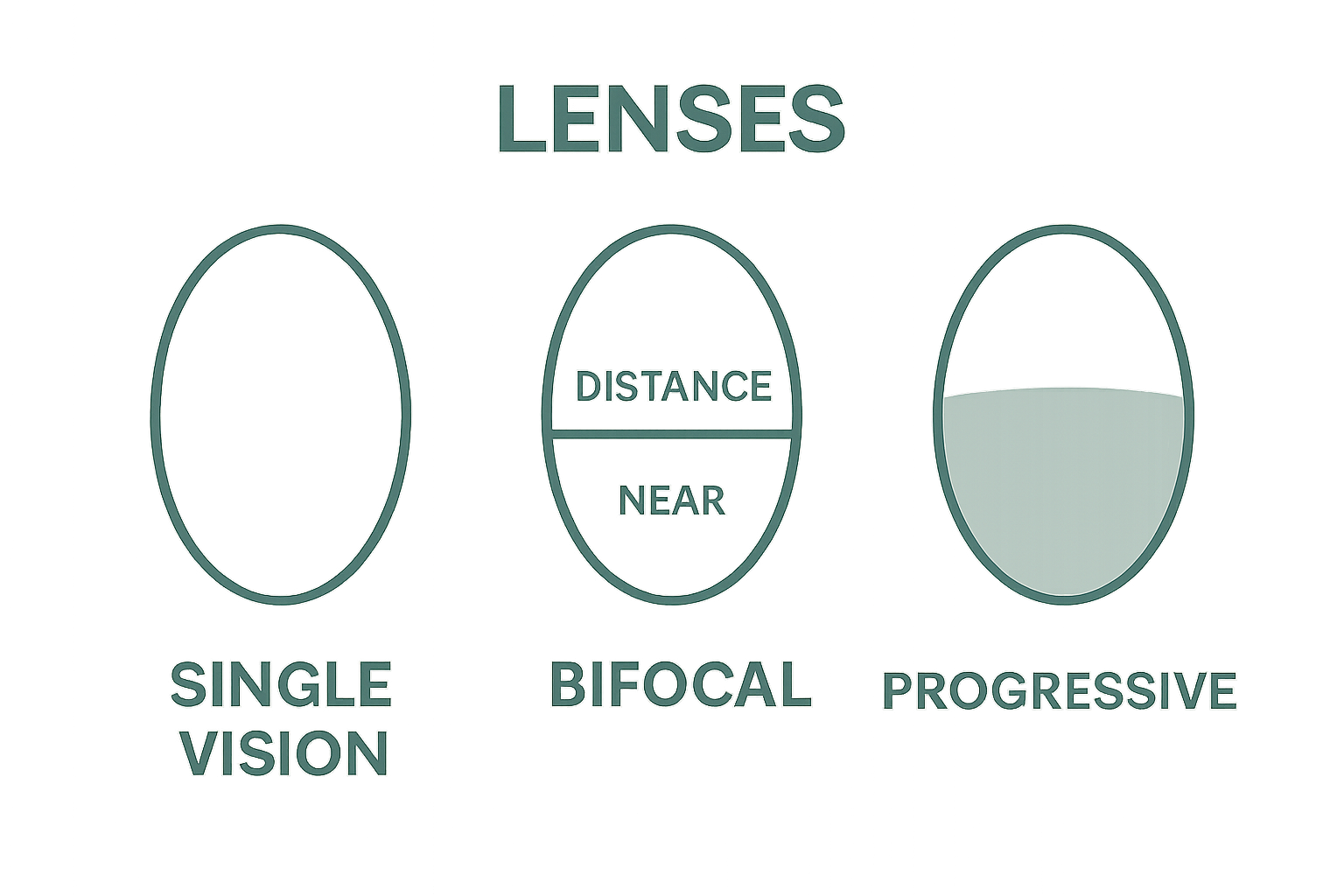
-
Bifocal Lenses: Feature two distinct optical zones separated by a visible line. The top portion provides distance vision, while the bottom segment offers near vision correction.
-
Progressive Addition Lenses (PALs): Provide a seamless transition between near, intermediate, and distance vision zones without visible lines. These lenses offer a more natural visual experience and aesthetic appeal.
Multifocal lenses are particularly beneficial for individuals experiencing presbyopia, a natural age-related vision change that reduces the eye’s ability to focus on close objects.
Advanced Lens Coatings: Enhanced Visual Comfort
Beyond lens types, modern reading glasses also incorporate advanced lens coatings that improve visual performance and comfort. Anti-reflective coatings reduce glare from digital screens and artificial lighting, while blue light filtering technologies help minimize eye strain during prolonged screen time.
Choosing the right lens type depends on your specific vision requirements, lifestyle, and personal preferences. Consulting with an eye care professional can help you determine the most suitable lens type for your individual needs.
Why Choosing the Right Lens Type Matters
Selecting the appropriate lens type for reading glasses is far more nuanced than a simple prescription selection. Your lens choice directly impacts visual comfort, daily performance, and overall eye health. Understanding the implications of different lens types can transform your reading and close-up work experience.
Visual Performance and Comfort
The right lens type ensures optimal visual clarity and reduces potential eye strain. When reading glasses do not match your specific vision requirements, you may experience significant discomfort and reduced productivity.
 Inappropriate lens selection can lead to headaches, blurred vision, and increased eye fatigue.
Inappropriate lens selection can lead to headaches, blurred vision, and increased eye fatigue.
Individuals with varying vision needs require different lens configurations. For instance, someone working extensively with digital screens might benefit from different lens technology compared to someone who primarily reads printed materials. Learn how to choose the right lens power to understand these crucial distinctions.
Long-Term Eye Health Considerations
Your lens type plays a critical role in managing age-related vision changes. As we age, our eyes naturally experience reduced flexibility, a condition known as presbyopia. Choosing appropriate lens types can help mitigate the progression of vision challenges and provide more comfortable visual experiences.
Key considerations for long-term eye health include:
- Adaptability: Selecting lens types that accommodate changing vision requirements
- Strain Reduction: Minimizing potential eye muscle stress through appropriate lens design
- Comprehensive Vision Support: Addressing near, intermediate, and distance vision needs
Lifestyle and Productivity Impact
Reading glasses are not just about seeing clearly they are about enhancing your daily experience. The right lens type can significantly improve performance in various activities, from reading and writing to using digital devices and engaging in detailed craftsmanship.
Professionals who rely on precise visual tasks particularly benefit from carefully selected lens types. Whether you are an accountant reviewing financial documents, a designer working on intricate details, or a retiree enjoying your favourite novel, the correct lens type ensures you can perform these tasks with maximum comfort and minimal visual strain.
Ultimately, choosing the right lens type is an investment in your visual health and overall quality of life. Consulting with an eye care professional can provide personalized guidance tailored to your unique vision requirements and lifestyle needs.
How Lens Types for Reading Glasses Work
Reading glasses lenses are sophisticated optical devices engineered to correct near vision challenges. Understanding their mechanical and optical principles helps explain how they successfully improve visual clarity and comfort for individuals experiencing vision changes.
Optical Power and Lens Mechanics
At the core of reading glasses functionality is optical power, measured in diopters. This measurement represents the lens’s ability to bend light and focus it precisely on the retina. When your eye’s natural lens loses flexibility with age, reading glasses compensate by providing external lens power that redirects light to create a clear, focused image for close-range activities.
Single vision lenses work by maintaining a consistent optical power across the entire lens surface. This uniform design allows for clear vision at a specific near distance, typically around 40 centimetres. Learn more about understanding reading glasses lens power to discover how these precise measurements impact your visual experience.
Multifocal Lens Zone Interactions
Multifocal lenses represent a more complex optical solution that integrates multiple vision zones within a single lens. These lenses function through strategic lens design that enables different optical powers in distinct areas:
- Bifocal Lenses: Divide the lens into two primary zones with a visible horizontal line separating distance and near vision correction
- Progressive Lenses: Create a gradual transition between vision zones without visible lines, allowing seamless visual adaptation
- Intermediate Zones: Provide additional correction for computer or mid-range distances
Lens Coating Technologies
Modern reading glasses incorporate advanced lens coatings that enhance optical performance beyond basic vision correction. Anti-reflective coatings reduce glare by minimizing light reflection, while blue light filtering technologies help protect eyes from digital screen emissions.
These coating technologies work by applying microscopic layers to the lens surface, which interact with light waves to improve visual comfort and reduce eye strain. The sophisticated engineering behind these coatings demonstrates how reading glasses have evolved from simple magnification tools to complex vision enhancement systems.
Understanding the intricate workings of reading glasses lenses reveals the remarkable optical engineering that supports clearer, more comfortable vision as our eyes naturally change with age.
Key Features of Common Lens Types
Reading glasses lens types are not uniform in design or functionality. Each lens type offers unique characteristics tailored to specific visual requirements and individual preferences. Understanding these distinctive features helps you make an informed choice about the most suitable lens type for your vision needs.
Single Vision Lens Characteristics
Single vision lenses represent the most straightforward lens type, designed to provide consistent magnification across the entire lens surface. These lenses maintain a uniform optical power, making them ideal for individuals with specific near vision challenges. Read our comprehensive guide on understanding reading glasses to explore how these lenses function.
Key features of single vision lenses include:
- Consistent Magnification: Uniform optical power throughout the lens
- Precise Near Vision Correction: Optimized for close-range tasks like reading and detailed work
- Simple Design: No complex vision zones or transitions
Multifocal Lens Design Elements
Multifocal lenses offer a more sophisticated approach to vision correction by integrating multiple optical zones within a single lens. These advanced lens types accommodate varying vision requirements, providing seamless transitions between different vision distances.
Two primary multifocal lens designs demonstrate remarkable engineering:
- Bifocal Lenses: Clearly defined near and distance vision zones separated by a visible horizontal line
- Progressive Lenses: Gradual power transitions without visible lines, creating a more natural visual experience
- Intermediate Vision Support: Additional correction for mid-range distances like computer screens
Advanced Lens Coating Innovations
Modern reading glasses transcend basic vision correction through innovative lens coating technologies. These microscopic surface treatments enhance visual performance, comfort, and eye protection.
Significant lens coating features include:
- Anti-Reflective Coatings: Reduce glare and improve visual clarity
- Blue Light Filtering: Minimize digital screen-related eye strain
- Scratch-Resistant Surfaces: Enhance lens durability and maintain optical quality
The diverse range of lens types reflects the complex and personalized nature of vision correction.
The table below provides a side-by-side comparison of the main lens types for reading glasses, highlighting their characteristics and best use cases to assist in choosing the right option.
| Lens Type | Key Characteristics | Best For |
|---|---|---|
| Single Vision | Uniform optical power across entire lens, simple design | Close-up activities (reading, craft) |
| Bifocal | Two zones (distance and near), visible dividing line | Users needing distance & near vision |
| Progressive (PALs) | Seamless transition between zones, no visible lines | Smooth shift between distances |
| Blue Light Filtering | Reduces eye strain from screens, often combined with other lens types | Frequent digital device users |
| Anti-Reflective Coated | Minimises glare, improves clarity and comfort | Glare-prone environments |
| Scratch-Resistant Coated | Enhanced durability, protects optical quality | Everyday use, extended lens lifespan |
Real-World Applications of Different Lens Types
Reading glasses lens types are not merely theoretical optical solutions but practical tools that enhance daily visual experiences across various professional and personal contexts. Understanding how different lens types function in real-world scenarios helps individuals make informed choices about their vision correction strategies.
Professional Performance Enhancements
Professionals in detail-oriented fields benefit significantly from strategically selected lens types. Precision occupations demand specific visual capabilities that standard vision correction might not adequately address. Explore our comprehensive guide to reading glasses to understand how lens types impact professional performance.
Real-world professional applications include:
- Accountants and Financial Analysts: Single vision lenses for precise document review
- Design Professionals: Multifocal lenses enabling seamless transitions between digital screens and physical drafting
- Technical Writers: Progressive lenses supporting continuous near and intermediate vision requirements
Lifestyle and Personal Activity Adaptations
Reading glasses lens types extend beyond workplace environments, supporting diverse lifestyle activities that require nuanced visual correction. Different lens configurations accommodate unique personal needs, from reading novels to engaging with digital technologies.
Lifestyle lens type applications encompass:
- Hobby Crafters: Single vision lenses for intricate detailed work like embroidery or model building
- Digital Enthusiasts: Blue light filtering progressive lenses for prolonged screen interactions
- Outdoor Readers: Anti-reflective coated lenses reducing glare during outdoor reading sessions
Age-Related Vision Management
As individuals age, their vision requirements become increasingly complex. Lens types play a crucial role in managing age-related vision changes, providing adaptive solutions that maintain visual independence and quality of life.
Age-related lens type strategies include:
- Early Presbyopia Stage: Introducing single vision reading glasses
- Moderate Vision Changes: Transitioning to bifocal lens designs
- Advanced Presbyopia: Implementing fully progressive lens technologies
The diverse applications of reading glasses lens types demonstrate their profound impact on visual experience. Selecting the appropriate lens type involves understanding personal requirements, professional needs, and lifestyle considerations.
Find the Right Lens Solution for Your Unique Reading Needs
Struggling to choose between single vision glasses and multifocal options? Unsure if you need anti-reflective coatings or blue light filters? Many face the same overwhelm when navigating the world of reading glasses, especially as vision requirements change with age or increased screen time. The truth is that the right lens type means less eye fatigue, greater clarity, and a more comfortable reading experience every day. Discovering which lenses will actually help your situation is the key to protecting your eye health and enjoying everything you love to read.
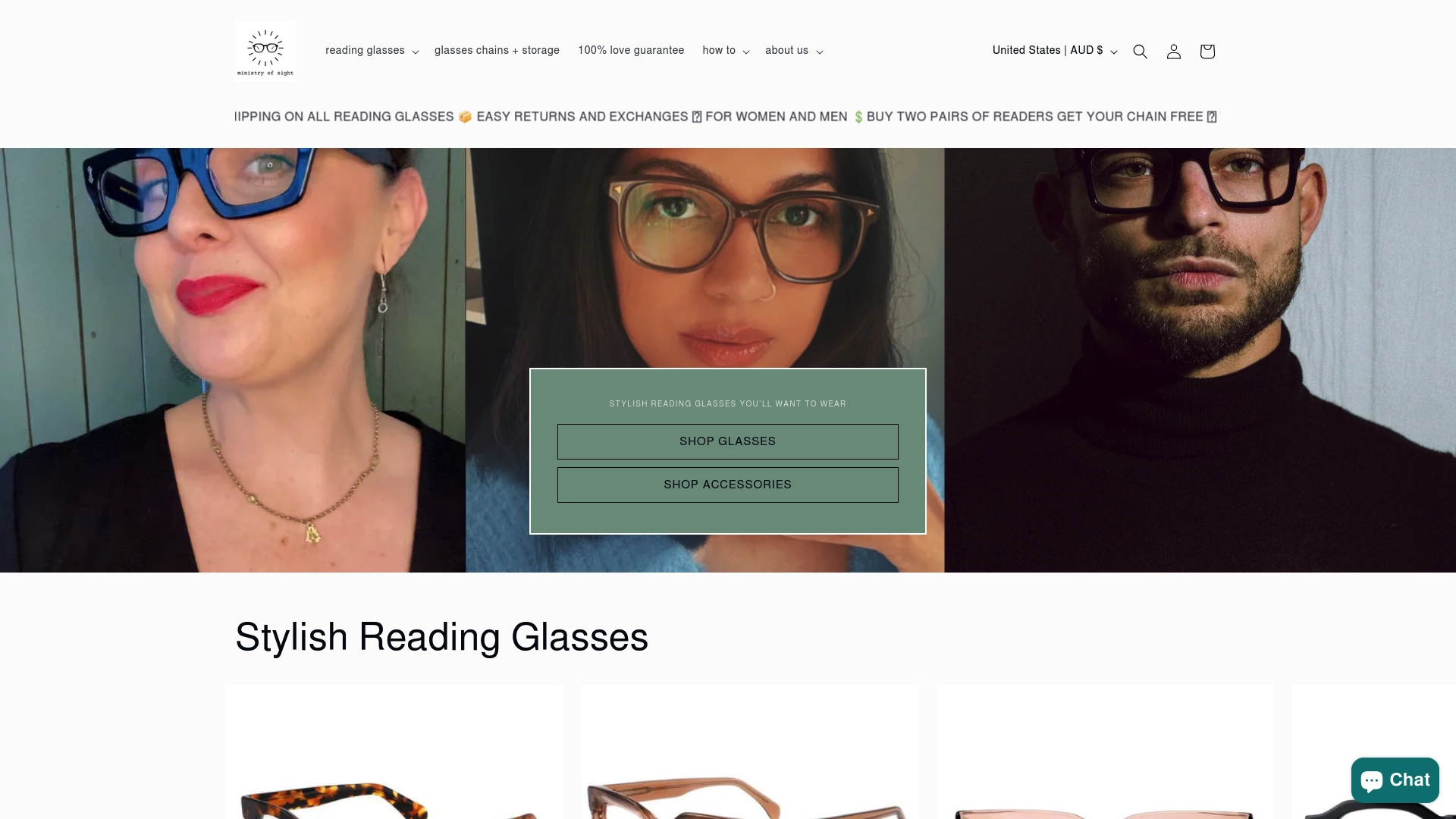
Upgrade your vision today with Stylish Reading Glasses for Men and Women that combine expert lens technology with modern design. See the difference high-quality lenses can make for your comfort and performance. Browse our collection or visit ministryofsight.com.au to explore our full range. Ready to take the next step? Find your perfect pair crafted for the way you read and live—because now is the best time to give your eyes the care they truly deserve.
Frequently Asked Questions
What are single vision lenses?
Single vision lenses are the most common type of reading glasses, designed to provide a uniform optical power across the entire lens. They are specifically optimized for close-up tasks like reading, enabling clear vision at a consistent near distance.
How do multifocal lenses differ from single vision lenses?
Multifocal lenses integrate multiple vision zones within a single lens, allowing wearers to see clearly at different distances. In contrast to single vision lenses, which focus solely on near vision, multifocal options like bifocal and progressive lenses cater to both near and distance vision needs.
What are the benefits of anti-reflective coatings on reading glasses?
Anti-reflective coatings reduce glare from digital screens and artificial light, enhancing visual comfort. These coatings help to minimize eye strain during prolonged use, making them particularly beneficial for those who spend significant time on computers or other devices.
How can I choose the right lens type for my reading glasses?
Choosing the right lens type involves considering your specific vision needs, lifestyle, and personal preferences. Consulting with an eye care professional can provide tailored advice to ensure you select the most suitable lens type for optimal visual comfort and functionality.
Recommended
- Understanding the Types of Reading Glasses for Better Vision – ministry of sight
- Reading Glasses Lens Power Guide Ministry of Sight – ministry of sight
- Understanding the Reading Glasses Fit Guide for Better Vision – ministry of sight
- Understanding the Role of Reading Glasses for Adults – ministry of sight
